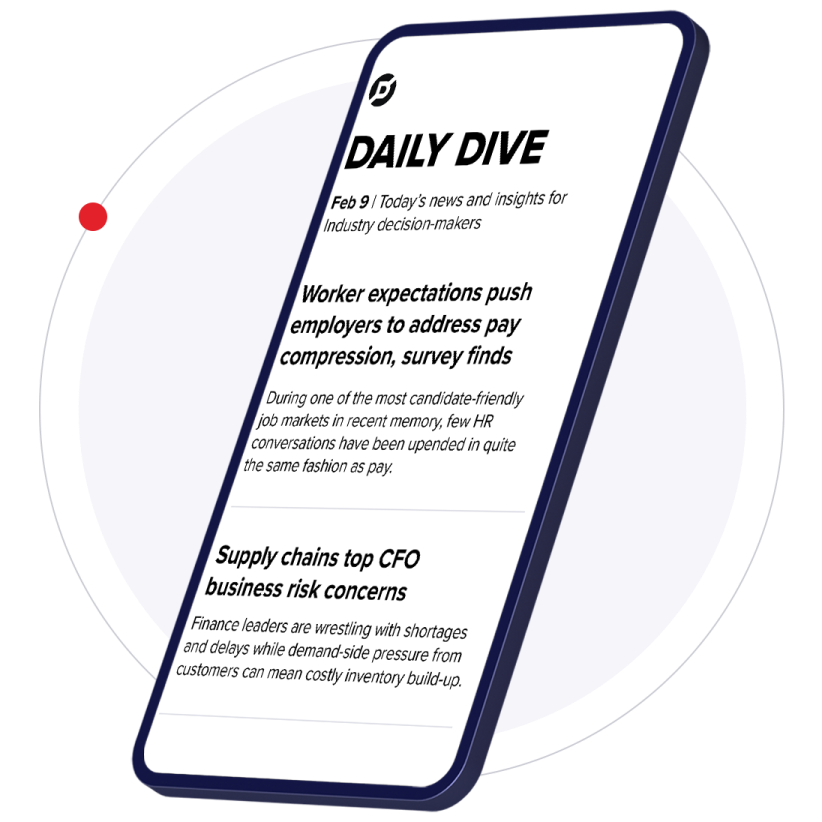Dive Brief:
- Meta revenue climbed 22% year over year to $39 billion in Q2, according to an earnings statement. The results topped Wall Street’s expectations.
- Ad impressions delivered across the Facebook and Instagram owner’s app ecosystem increased 10% year-over-year while the average price-per-ad was also up 10%. Executives cited the e-commerce, gaming and entertainment and media verticals as driving the highest growth among advertisers.
- Meta said Q3 revenue should land between $38.5 billion and $41 billion, a robust forecast. The company continues to focus on artificial intelligence (AI), which it says is improving marketing performance and could eventually reshape its advertising fundamentals.
Dive Insight:
Meta offered further detail on its vision for AI in marketing as part of a Q2 earnings report that beat analyst estimates. The tech giant currently breaks out AI into two areas: core AI, or the systems it has used to support its ecosystem for years, and generative AI, a newer technology that is costly to develop and not yet a meaningful revenue driver, but positioned by executives as transformative.
“In the coming years, AI will be able to generate creative for advertisers as well, and will also be able to personalize it as people see it,” said Meta CEO Mark Zuckerberg on a call discussing the results with investors. “Over the long term, advertisers will basically just be able to tell us a business objective and a budget, and we’re going to go do the rest for them. We’re going to get there incrementally over time, but I think this is going to be a very big deal.”
Analysts view generative AI as a potentially powerful tool for digital ad platforms, though some express concern over delegating too much work to automation. Marketers themselves may be reluctant to remove the degree of oversight as envisioned by Zuckerberg.
“Meta is well positioned to drive value with genAI for advertisers but let’s be clear that it’s a ways off, if ever, before CMOs will simply hand over the keys to an AI agent that will autonomously generate ad creative on their behalf,” said Mike Proulx, vice president and research director at Forrester, in emailed comments. “While genAI’s technical capabilities meaningfully mature at an accelerated pace, Meta cannot lose sight of the responsibility and importance of the human touch in the advertising process.”
Currently, much of Meta’s AI heavy lifting is done behind the scenes. The company’s ad-ranking framework, Meta Lattice, helped improve ad efficiency and performance in Q2, according to CFO Susan Li. More advertisers are also now using Advantage+, a suite of AI-powered ad products that includes tools that optimize ads for different formats and surfaces. In terms of user-facing AI experiences, Meta boasted that its Meta AI assistant, made broadly available last quarter, is on pace to become the most-used offering in its category by the end of 2024.
AI is also a key piece of Meta’s plans for realizing the metaverse, one of its long-term strategic goals. But the metaverse continues to be a massive money loser: Reality Labs, the Meta division tasked with developing augmented and virtual reality hardware and software, incurred expenses of $4.8 billion in Q2, up 21% year-over-year. The unit generated revenue of $353 million over the period, making for its highest operating loss in two years, and has become a bit of a sore spot as scalable consumer use cases remain elusive while costs soar.
“It would seem prudent at this point for Meta to pivot its metaverse ambitions to a much more narrow focus,” said Proulx.
Meta made progress in streamlining other aspects of its ad business in Q2. The company has fine-tuned what ads to show users as they jump between properties like Facebook and Instagram, which can grow conversions and revenue without increasing ad load. It also recently unified video recommendations on Facebook, bringing together the TikTok lookalike Reels, long-form videos and livestreams into a single experience.
On the advertiser demand front, e-commerce brands continued to dump money into Meta to reach new users. China-based marketplaces like Temu and Shein have attracted troves of U.S. shoppers with aggressive social media marketing. Asia-Pacific and other global regions were the largest drivers of ad impression growth in Q2, Li said.















